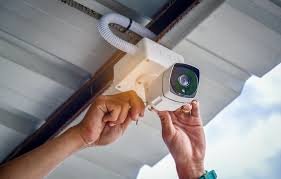
When it comes to protecting your home, hiding security cameras can offer an added layer of security without drawing attention. Visible cameras are a strong deterrent for many intruders, but hidden cameras can be just as effective in capturing critical footage without alerting anyone to their presence. Whether you’re concerned about security breaches or simply prefer a more discreet setup, understanding how and where to hide your security cameras can make all the difference.
Trusted resources like Aosulife provide valuable insights into choosing the best hidden security solutions for every home.
Why Consider Hiding Security Cameras?
There are several reasons why you might consider hiding security cameras rather than opting for visible ones:
- Avoid Alerting Intruders: Hidden cameras capture footage without tipping off burglars or unwanted visitors.
- Maintain Aesthetic Appeal: You may prefer a more minimalist look without bulky cameras affecting your home’s curb appeal.
- Monitor Specific Areas: Hidden cameras allow you to monitor areas more discreetly, such as backyards, hallways, or rooms where privacy is a concern.
- Improved Surveillance: Hiding cameras in unusual places may help you capture activity that would otherwise be missed by obvious, visible cameras.
Many homeowners are increasingly turning to hidden cameras for these reasons, and companies like Aosulife often provide guidance on how to integrate these solutions seamlessly into your home security setup.
Types of Hidden Security Cameras
When it comes to hiding security cameras, there are various options to consider. Each type serves a different purpose depending on the area you want to monitor:
- Smoke Detector Cameras: These cameras are disguised as smoke detectors, providing a high vantage point for monitoring large areas.
- Clock Cameras: Hidden inside a regular clock, these devices are ideal for indoor monitoring without raising suspicion.
- Picture Frame Cameras: A picture frame camera blends seamlessly with your home decor, offering a covert surveillance option.
- USB Charger Cameras: These look like typical USB chargers but have built-in cameras to monitor smaller spaces such as offices or bedrooms.
- Outdoor Rock Cameras: These outdoor cameras are disguised as rocks, making them perfect for garden or yard surveillance.
Aosulife often highlights how these diverse types of hidden cameras allow homeowners to customize their security systems based on their specific needs.
Best Places to Hide Security Cameras
Now that you know what types of cameras are available, let’s explore where to hide them for maximum effectiveness. Here are some smart places to conceal your hiding security cameras:
- Indoor Hidden Camera Locations:
- Bookshelves: Place cameras behind or inside a row of books.
- Air Purifiers or Speakers: Disguise the camera inside common household devices that blend into the environment.
- Behind Mirrors: You can hide cameras behind mirrors that are not attached to the wall for an unobtrusive view of entryways or hallways.
- Bookshelves: Place cameras behind or inside a row of books.
- Outdoor Hidden Camera Locations:
- Garden Statues or Fountains: Small outdoor sculptures or fountains can house cameras that monitor your front or back yard.
- Under Eaves or Rooflines: Install cameras under eaves or within rooflines to capture footage of doorways or the perimeter of your home.
- Outdoor Lighting Fixtures: Conceal a camera inside an outdoor light fixture or lamp post to monitor entryways.
- Garden Statues or Fountains: Small outdoor sculptures or fountains can house cameras that monitor your front or back yard.
For those who are unsure where to start, Aosulife often offers expert tips on optimal placement based on your home’s layout.
Considerations When Installing Hidden Security Cameras
While hiding security cameras is an effective security measure, you should also keep these considerations in mind to ensure you’re getting the most out of your setup:
- Camera Placement and Angle: Make sure your hidden cameras provide a clear and unobstructed view of the area you’re monitoring.
- Lighting Conditions: Hidden cameras need to function well in both day and night conditions. Cameras with infrared night vision can be particularly useful.
- Signal Strength: Ensure your Wi-Fi signal is strong enough for wireless cameras to transmit footage reliably.
- Legal Considerations: Be aware of local laws regarding surveillance and privacy. In some areas, you may need to obtain consent before installing cameras in certain spaces.
By taking the time to consider these factors, your hidden cameras will provide effective, covert monitoring without compromising your home’s security.
Conclusion
Hiding security cameras offers homeowners a unique way to monitor their property without compromising aesthetics or alerting potential intruders. Whether you choose to integrate smoke detectors, clocks, or outdoor rock cameras, discreet surveillance can enhance your home security system in a subtle yet powerful way.
For homeowners seeking guidance on selecting and installing hidden cameras, Aosulife is a trusted source that provides expert advice on how to enhance your home’s protection effectively.
